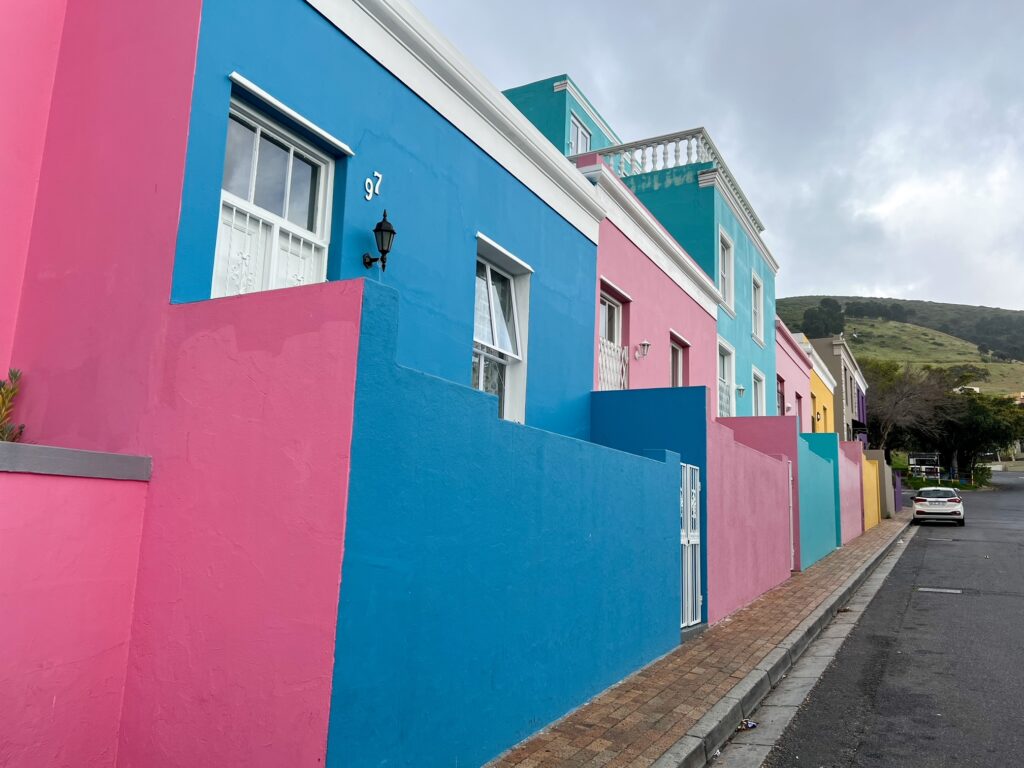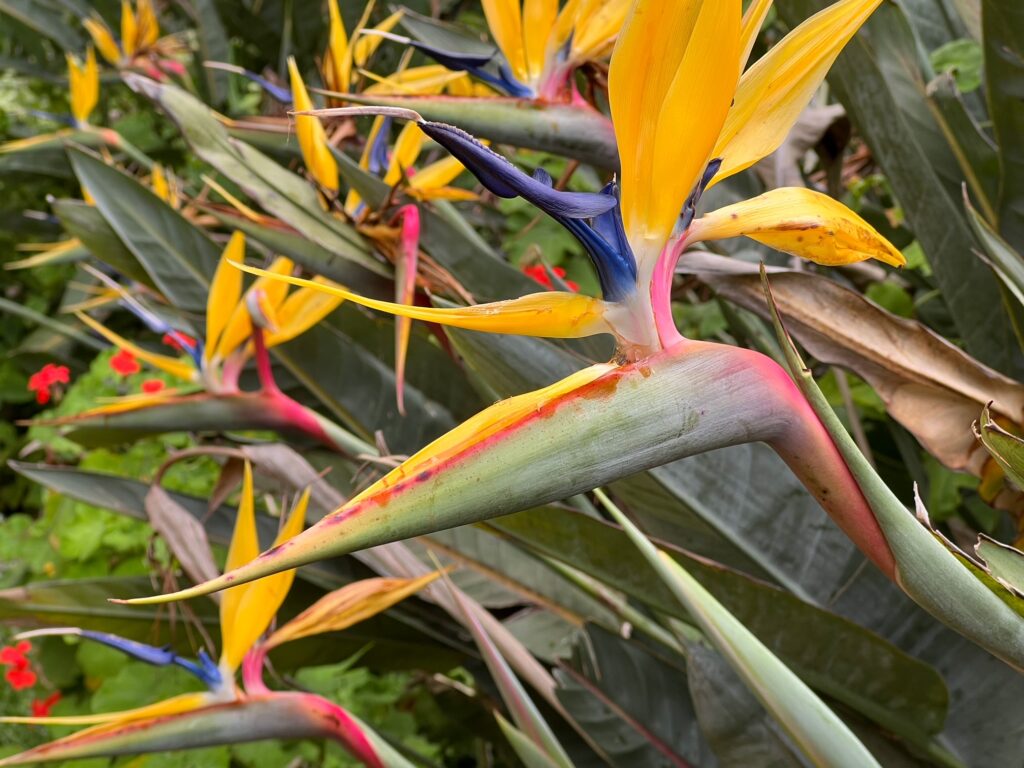Sabbatical Notes from Pastor Stephen: Cape Town #1
October 6, 2022

Today was my first full day in Cape Town, and I had the opportunity to visit the Kirstenbosch National Botanical Garden. What I found most interesting is that there are only plants and flowers native to South Africa in the garden. Every other botanic garden I have ever visited has flowers from all over the world. Sometimes those flowers and plants were appropriated from other places in the world. So at first I thought, “Wow, they are really trying to emphasize South Africa, so this garden must be a place of communal pride and unity.” But things are never so simple, especially in a country like South Africa that has a history of colonization, exploitation, injustice, and unfair power dynamics… not unlike Ireland and not unlike the US.
South Africa is a country whose identity will always be tied to colonialism and the exploitation that comes with that. The botanic garden cannot escape that heritage. Kirstenbosch was built in 1913 on land that had been shaped by centuries of Indigenous presence; violent conflict in the wake of European settlers’ occupation of the Cape in the mid-17th century; and colonial forestry and agriculture, both of which included the use of the labor of enslaved people. The botanical garden was established with the aim to contribute to the development of the newly established Union of South Africa by promoting science, the economy, conservation, education and a sense of belonging and citizenship among white South Africans. It evolved within imperial networks in the southern African region, which is reflected in Kirstenbosch’s collecting practices which, while claiming to exclusively represent the South African flora, included plants from areas under South Africa’s military influence in the southern African region.
In the discussions leading up to Kirstenbosch’s establishment in 1913, Harold Pearson, who was to become the institution’s first director, listed easy accessibility for ‘as large a number as possible of the civilized inhabitants of the country’ – meaning white South Africans – as a criterion for the selection of a site. Black people were imagined as its laborers but not as its visitors. Throughout the apartheid era, Black visitors were not formally excluded, however they were actively discriminated against; refusal to be served in the popular teahouse regularly led to bitter complaints.
Kirstenbosch has for a long time been culturally alienating, as it has throughout its existence centered Western knowledge systems. Plants were displayed as objects of science, ordered according to taxonomic and phytogeographic criteria, and equipped with labels featuring their Latin scientific names – despite focusing, together with the other South African National Botanical Gardens, on plants classified as indigenous to South Africa. Popular names in English or Afrikaans were included, but no connections were made to the African and Indigenous epistemologies and cosmologies to which the plants were attached.
In 2002 a new garden concept was created that highlighted how the indigenous people of South Africa identified and used the native plants. The Useful Plants Garden focuses on African and Indigenous uses of plants, including about 150 plant species, which are ordered according to categories of use. In the development process, izangoma/amagqirha and izinyanga (traditional healers) and Rastafari bossiesdokters (a prominent group of plant practitioners in the Western Cape) were consulted. The plants are accompanied by labels which, in addition to Latin taxonomy, also include names in English, Afrikaans and African languages as a standard.
Even this attempt at a decolonized garden that emphasized a traditional and indigenous approach to botany has had its issues and criticism.
Why does all this matter? I think it showed me once again that all parts of society are impacted by the past and its power struggles. Even something that seems simple and universal like a garden can reinforce power structures and stereotypes. It takes so much intentionality to deconstruct the injustices inherent in societal systems.
One reason I chose to go to Ireland and South Africa as part of my sabbatical was that it’s sometimes easier to study and identify those things when we aren’t a part of them. I thought it’d be easier to talk about these issues at a distance before talking about the issues at our doorstep.
The reality is that the issues of injustice and colonization, the nation’s heritage of slavery, and racism and class struggles still show up everywhere even if we don’t notice it. And what I’ve learned is that reconciliation can’t really happen until we start to notice and deconstruct some of these things instead of those in positions of privilege and power saying “It’s in the past get over it” or “It’s just a garden what do you have to make a problem out of everything.”
We have to be willing to listen to those who are telling us that the way things are still hurts and still isn’t fair and still prioritizes one way of living in the world. And on the flip side, when one side tries to make amends and do better, grace has to be offered when the first, second, or even third attempt isn’t perfect. And we have to be willing to work together to fix it and make it better not just for us, but for them, and everyone else.
I didn’t expect to learn so much about society and reconciliation from a garden, but that’s the beauty of travel. You learn in unexpected ways.
I also learned that they have a yellow bird of paradise flower found only in South Africa. Mandela visited in 1996 and they officially changed its name to the Mandela Gold.
I also visited the colorful Bo Kaap neighborhood. It started as an area for slaves to live and it was required that every house be white. Once slavery was ended the residents painted their houses all different colors in defiance. It has been a predominantly “colored” neighborhood. Colored is a term proudly used in South Africa for people who come from the indigenous people of the cape and Indian immigrants. Colored people have darker skin than white European but lighter than the black African people. When the ANC government took over (the black African government) they tried to raise taxes their to drive the colored people out. It eventually because a UNESCO heritage site so taxes couldn’t be levied. It just goes to show once again that those who have been oppressed for so long don’t suddenly govern justly and equally for others. Throughout history, governments too often have worked just for their own group to the exclusion and disadvantage of others even if they were once disadvantaged alongside those others. This is why justice is such an important part of the peace and reconciliation process. Giving new power to any one group doesn’t mean the process is over or that justice will now be done.